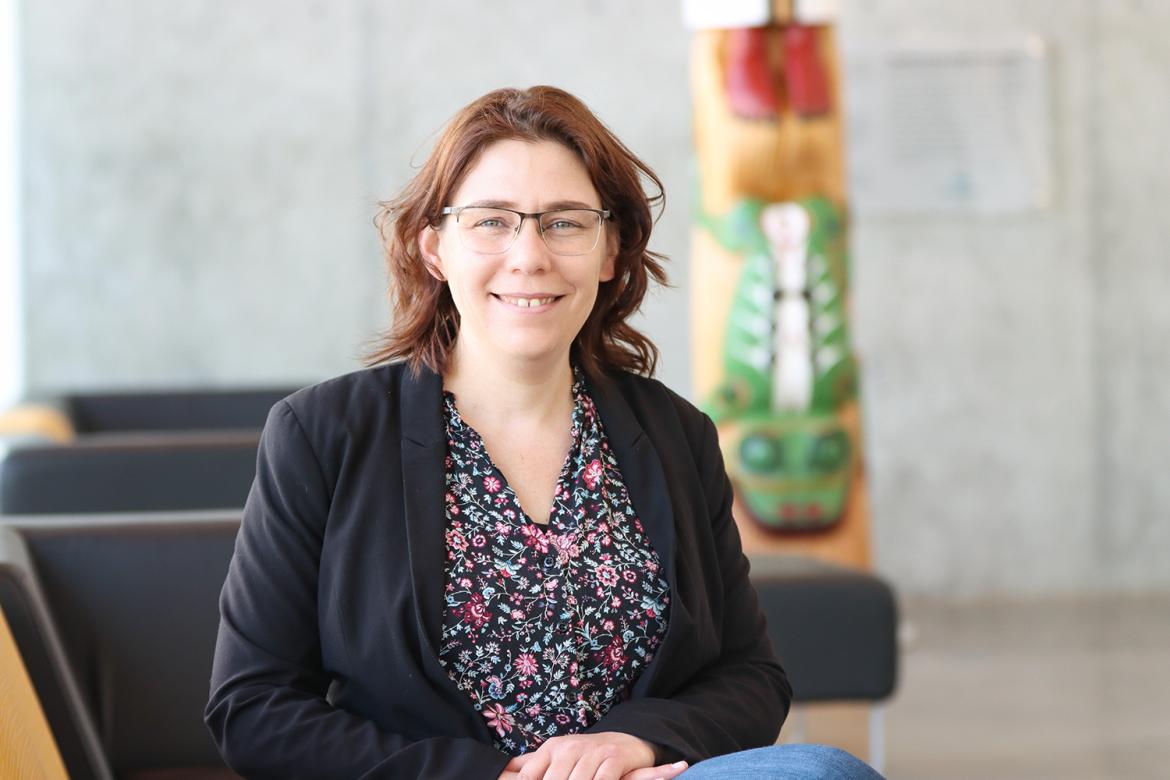Member in the news
https://news.viu.ca/5-questions-melissa-huggan

May 31, 2023 - 11:30am
Dr. Melissa Huggan, a Vancouver Island University (VIU) Math Professor, received the 2022 Kirkman Medal from the Institute of Combinatorics and its Applications (ICA). The award recognizes excellent research by fellows or associate fellows of the ICA early in their research careers.
“She is a leader in her profession, distinguishing herself in organizing conferences, mathematical outreach and teaching excellence,” said the ICA in a release.
Huggan joined VIU in August 2022. She completed her PhD in 2019 at Dalhousie University and was a Natural Sciences and Engineering Research Council of Canada post-doctoral fellow at Toronto Metropolitan University from 2019 to 2021. She was an Atlantic Association for Research in the Mathematical Sciences post-doctoral fellow at Mount Allison University from 2021 to 2022.
Huggan’s research examines pursuit-evasion games, and her current research relates to the classic game of Cops and Robbers. This research can give insight into the real-life problem of containing the spread of misinformation on a network.
We caught up with Huggan to talk about the Kirkman Medal and her research.
How does it feel to receive the 2022 Kirkman Medal from the ICA?
It is an immense honour to receive the 2022 Kirkman Medal from the ICA. Being recognized for my research contributions by the mathematical community is very rewarding.
What sparked your interest in mathematics?
I always enjoyed the problem-solving aspect of mathematics. It often felt like putting a puzzle together; an opportunity to think creatively, knowing there is a final answer without knowing what it is until you persevere and carefully think through all the details. The reward comes when you stand back and see the beauty in a well-thought-out, clearly-written solution.
Mathematics is a lively discipline, with active research in all areas. Once learning this fact, I wanted to know more.
What do you enjoy most about being a mathematics professor?
Sharing my passion of mathematics with others. I am fortunate enough to have a profession that allows me to share my passion on three different levels: teaching, research and student supervision. Each lends itself to a very different means of disseminating mathematics: through instruction, technical writing of research results and mentorship of the next generation respectively.
Why did you choose to examine combinatorial game theory and what did you discover?
Combinatorial game theory (CGT) is the mathematical study of two-player games, where players move alternately. Both players always know all game states throughout play, and there is no element of chance such as dice or spinners. Using mathematics, we aim to determine the best strategies for each player, who wins the game (game outcome), and by how much do they win the game (game value).
I took a class in combinatorial game theory during my undergraduate degree that opened my eyes to a whole new area of study. As with many topics, the more you learn, the more you realize there is to learn. After completing a master’s degree where I studied combinatorial games, I pursued a PhD with the aim of becoming an expert in the field. I completed my PhD in 2019. My research focused on bridging combinatorial game theory with economic game theory by developing a theory of simultaneous combinatorial games. I also examined the use of alternative tools for classical CGT for gaining insight into the mathematical structure of games when the game value was too difficult to calculate.
Tell us about some of your research that examines pursuit-evasion games, in particular your work relating to the classic game of Cops and Robbers.
Cops and Robbers is played on a network. A network is a set of nodes, which are connected if there is a relationship between them. A map is a network, where locations are nodes and roads are connections between them.
Pursuit-evasion games are adversarial games played on networks, where one player is a threat (typically called the robber), and the other player (typically called the cops) is trying to neutralize the threat. The game starts by the cop placing themselves on a node, then the robber placing themselves on a different node. Then they alternate turns, starting with the cop, where they can move from one node to another if they are connected. If the cop can occupy the same node as the robber, then the threat is neutralized (or captured), the game is over and the cop wins. If this never happens, then the robber wins. This model has perfect information, meaning both players always know all game states. Research on Cops and Robbers often focuses on how to minimize the resources required to capture the robber. Resources include the number of cops and the time it takes to capture.
I am studying a variant of the game where the robber damages each unique location they visit. The robber’s goal is to damage as many nodes as they can. The cop’s goal is to limit the damage. A central question is how much of the network can the cop protect? To solve questions in this research area, we use our mathematical understanding of the structure of networks to develop strategies for the cop and robber players respectively. This models the real-life problem of containing the spread of misinformation on a network.
Tags: 5 Questions | Mathematics | Research

Comments
Post a Comment